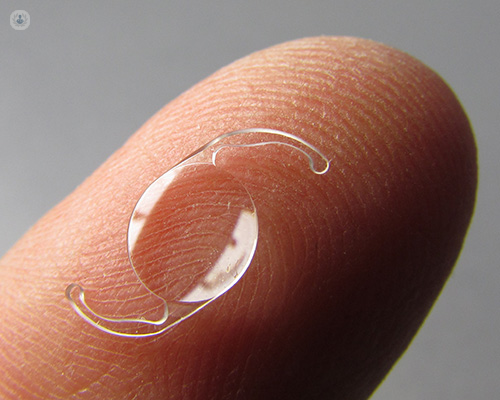


What is refractive lens exchange?
Refractive lens exchange (RLE), also known as lens replacement surgery or clear lens extraction is a procedure offered to patients with extreme farsightedness (hyperopia) or age-related presbyopia (loss of the ability to focus on nearby objects). The procedure is actually almost identical to the procedure for cataract surgery in that the natural lens is replaced with an intraocular lens (IOL) which is a synthetic implant. Whilst cataract surgery is done to remove a cloudy lens, RLE is done to reduce the need for wearing glasses or using contact lenses. Hence, RLE can be an alternative option to other forms of corrective eye surgery such as LASIK.

Why is it done?
The aim of RLE is to reduce dependence on glasses or contact lenses. This can help patients to be better abled at leading a more active lifestyle, improving their quality of life. Additionally, having RLE means that later in life you will not develop cataracts and need cataracts surgery. This is because your lenses will already be IOLs. RLE is often offered to patients who are over the age of 50 with a glasses prescription too high for laser eye surgery. People with extreme astigmatism can also benefit from RLE as the implanted IOL can have astigmatism correction.
What does refractive lens exchange involve?
During the procedure you will lie down, whilst your surgeon performs the surgery through a microscope. You can have surgery on both eyes in one day, but this will depend on your surgeon and their recommendation. Surgery takes roughly 20 minutes per eye and is done as a day-case procedure, meaning you return home on the same day. Anaesthetic drops are administered to the eye so that there is no discomfort. Next, a small incision is made in the eye where the white of the eye meets the cornea. Next, the membrane covering the natural lens is removed and the natural lens is removed. Following this, the IOL is inserted and the cavity is washed with fluid and antibiotics.
You can have different types of IOL inserted, depending on your vision needs:
How do you prepare for refractive lens exchange?
There are no specific measures needed to prepare for RLE, however, your surgeon will advise you if any need to be made.
Aftercare:
Many patients will report immediate improvements in vision following RLE, however, return to normal activities should commence 5-7 days after the procedure. The full effects of the surgery will be experienced a few weeks after the procedure.
Alternatives to refractive lens exchange:
Alternatives to RLE include laser eye surgery and phakic intraocular lens implantation (PIOL). Laser eye surgery does not involve lens implantation, but instead uses a special laser to correct the focusing ability and curvature of the eye. Phakic intraocular lens implantation does use lens implants, but instead of replacing the natural lens, they are inserted to sit in front of the natural lens. However, RLE is often a better option for older patients, whilst laser surgery and PIOL are better for younger patients. Of course, another option is to continue using glasses or contact lenses.